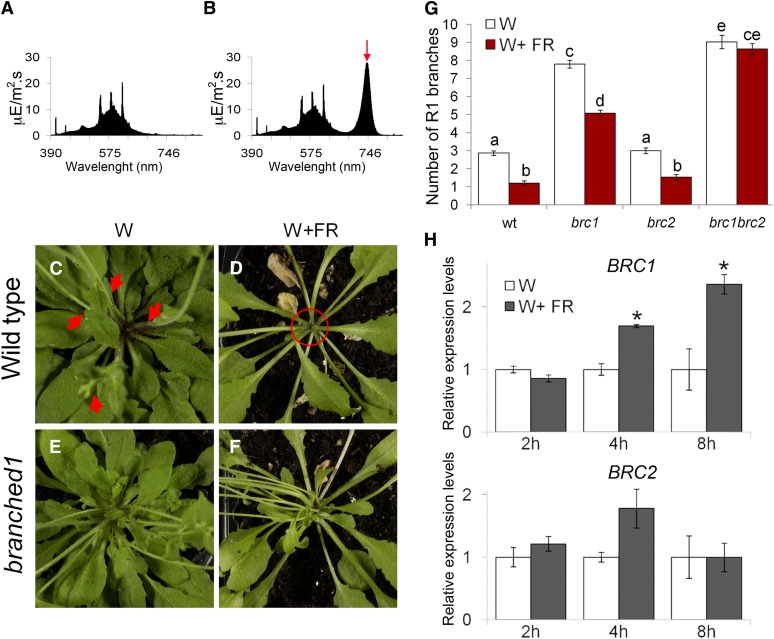Figure 1.
Effect of a Simulated Shade on Lateral Shoot Elongation in Arabidopsis Wild-Type, brc1, and brc2 Mutant Plants and Response of BRC1 and BRC2 to W+FR.
(A) W spectrum used to grow plants presented in (C), (E), and (G).
(B) W+FR spectrum used to grow plants in (D), (F), and (G).
(C) and (D) Close-up of wild-type Arabidopsis rosettes grown continuously in W (C) or in W until flowering and then for 2 weeks in W+FR (D). Red arrows indicate lateral shoots. In W+FR, axillary buds are arrested (red circle).
(E) and (F) Close-up of brc1 rosettes grown in W (E) or W+FR (F). Buds of brc1 mutants are unresponsive to W+FR, although other shade responses (stem and petiole elongation) are normal.
(G) Branching phenotypes of the wild type (wt) and brc1 and brc2 mutants grown in W or W+FR for 3 weeks after flowering (n = 37 to 40).
(H) and Transcript levels of BRC1 (H) and BRC2 analyzed by qPCR, in buds of W+FR-treated plants, relative to levels in W-treated plants.
Error bars are se of three biological replicates. Different letters in (G) denote significant differences (one-way ANOVA, P < 0.05) among means. Asterisks in (H) are significant differences (Student’s t test, P < 0.05) between control and treated plants.
[See online article for color version of this figure.]

